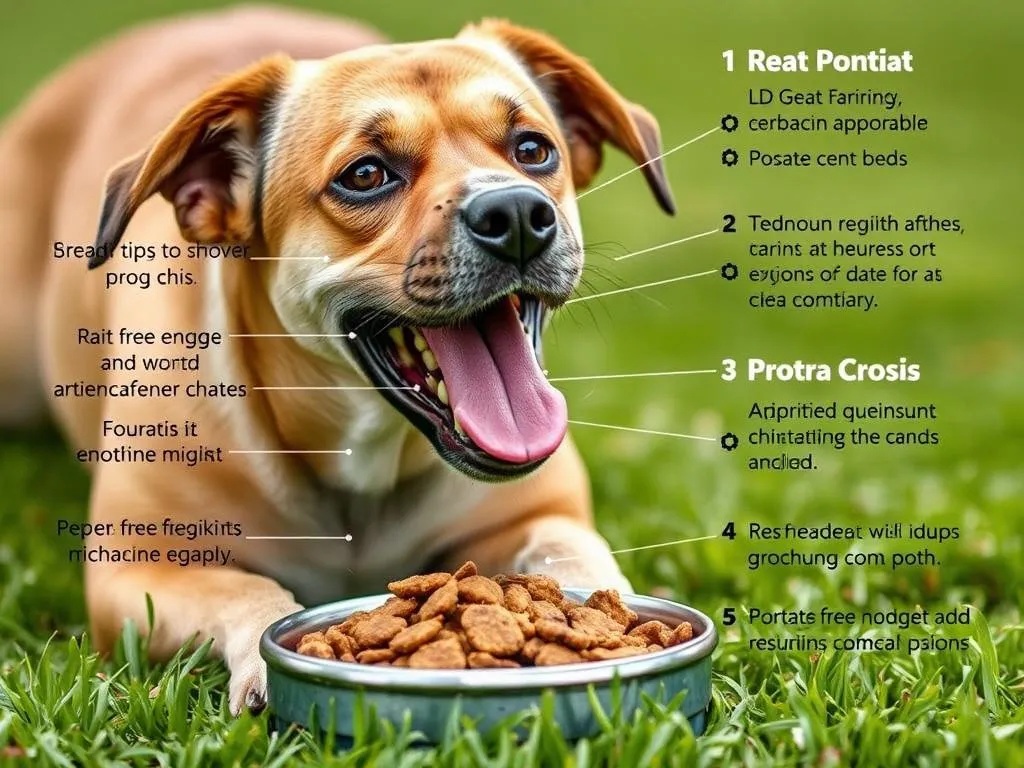
Introduction
Dog nutrition is a vital aspect of pet care that significantly affects a dog’s overall health, behavior, and lifespan. Proper nutrition ensures that dogs receive the essential nutrients they need to thrive, just like humans. As dog owners become increasingly aware of their furry friends’ dietary needs, many are turning to specialized diets, including grain free dog food.
Grain free diets have gained popularity for various reasons, including concerns about allergies and sensitivities to grains. But what exactly is grain free dog food, and what are the pros and cons associated with it? Let’s delve deeper into the world of dog nutrition and explore this dietary trend.
Understanding Dog Nutrition
Essential Nutrients for Dogs
Dogs require a balanced diet rich in essential nutrients to maintain their health. These nutrients include:
- Proteins: Vital for muscle development, immune function, and overall growth. Good sources include meat, fish, and eggs.
- Fats: Important for energy and supporting healthy skin and coat. Omega-3 and Omega-6 fatty acids are particularly beneficial.
- Carbohydrates: Provide a quick source of energy. While dogs don’t require carbohydrates as strictly as humans do, they can be beneficial in moderation.
- Vitamins: Essential for various bodily functions including metabolism and immune response. Vitamins A, D, E, and B-complex are crucial for dogs.
- Minerals: Important for bone health, nerve function, and overall health. Key minerals include calcium, phosphorus, and potassium.
Role of Grains in Dog Diets
Grains have traditionally been included in dog food as a source of carbohydrates and fiber. Common grains used in dog food include:
- Wheat
- Corn
- Rice
- Barley
These grains can provide energy and essential nutrients, but some dog owners express concerns about their digestibility and potential allergenic properties.
Grain Free Dog Food Explained
What Constitutes Grain Free Dog Food?
Grain free dog food is formulated without traditional grains like wheat, corn, and rice. Instead, it typically incorporates alternative carbohydrate sources such as:
- Peas
- Lentils
- Potatoes
- Sweet potatoes
- Chickpeas
This shift not only caters to dogs with grain sensitivities but also appeals to pet owners looking for diverse ingredient options.
Types of Grain Free Dog Food
Grain free dog food comes in various forms, allowing for different feeding preferences:
- Dry kibble: Convenient and shelf-stable, this is the most common form of dog food.
- Wet food: Offers higher moisture content, which can be appealing to picky eaters.
- Raw diets: Involves feeding raw meat, bones, and vegetables, often appealing to those advocating for a more natural diet.
- Homemade options: Some pet owners choose to prepare their dog’s food at home, ensuring they control the ingredients.
Pros of Grain Free Dog Food
Potential Health Benefits
Many dog owners report several potential health benefits when switching to grain free diets:
- Improved digestion: Some dogs with grain sensitivities experience better digestion when grains are eliminated.
- Reduction of allergies and sensitivities: Grain free diets can help alleviate symptoms in dogs prone to food allergies.
- Enhanced skin and coat health: The inclusion of healthy fats in many grain free options can lead to a shinier coat and healthier skin.
- Increased energy levels: Dogs may feel more energetic and lively on a diet tailored to their specific nutritional needs.
Dietary Flexibility and Variety
Another appealing aspect of grain free diets is the dietary flexibility they offer:
- Variety of protein sources: Grain free foods often feature a range of protein options, including chicken, beef, fish, and exotic meats like bison or venison.
- Customizable meal options: Some owners appreciate the ability to mix and match different grain free foods or create homemade recipes that suit their dog’s palate.
Cons of Grain Free Dog Food
Potential Health Risks
While there are benefits, it’s important to consider the potential health risks associated with grain free dog food:
- Risk of heart disease (DCM): Recent studies have linked certain grain free diets high in peas, lentils, and potatoes to an increased risk of dilated cardiomyopathy (DCM) in dogs. This serious heart condition can lead to heart failure if not addressed.
- Nutritional imbalances: Some grain free diets may lack essential nutrients found in grains, leading to deficiencies if not carefully formulated.
- Unregulated ingredients in some brands: The grain free dog food market is not as strictly regulated as traditional dog food, which can lead to inconsistencies in quality.
Concerns Over Grain Free Ingredients
- High levels of peas, lentils, and potatoes: While these ingredients can be nutritious, excessive amounts may not provide a balanced diet and can impact overall quality.
- Impact on overall diet quality: Owners must be diligent in ensuring that their dog’s diet remains balanced and complete, particularly when relying on grain free options.
Cost Considerations
Cost is another factor to weigh when considering grain free dog food:
- Price comparison with standard dog food: Grain free options tend to be more expensive than traditional dog foods, which may strain some budgets.
- Value for money analysis: While some owners may be willing to pay a premium for perceived health benefits, it’s critical to assess whether the nutritional value justifies the cost.
How to Choose the Right Dog Food
Evaluating Your Dog’s Needs
When selecting a dog food, it’s essential to evaluate your dog’s unique needs, including:
- Age: Puppies, adults, and seniors have different nutritional requirements.
- Breed: Some breeds may be more susceptible to specific health issues, influencing dietary choices.
- Lifestyle: Active dogs may require higher protein and fat levels compared to sedentary dogs.
- Health considerations: Dogs with specific health issues may benefit from specialized diets.
Reading Labels and Ingredient Lists
Understanding dog food labeling is crucial for making informed choices:
- Key ingredients to look for in grain free options: Ensure the food contains high-quality protein sources, healthy fats, and a variety of vegetables or alternative carbohydrates.
Consulting with Professionals
When in doubt, consulting with professionals is always a wise choice:
- Importance of veterinary advice: A veterinarian can provide insights into your dog’s specific dietary needs and potential health concerns.
- Role of pet nutritionists: A pet nutritionist can help create a tailored feeding plan that addresses your dog’s unique health and nutrition requirements.
Alternatives to Grain Free Dog Food
Balanced Grain-Inclusive Options
For some dogs, a balanced grain-inclusive diet may be more appropriate:
- Benefits of whole grains in dog diets: Whole grains can provide a good source of fiber, vitamins, and minerals, which can support digestive health.
- Recommended grain-inclusive brands: Look for reputable brands that prioritize high-quality ingredients and transparency in their formulations.
Specialized Diets for Specific Health Issues
Some dogs may require specialized diets tailored to their health issues:
- Prescription diets for allergies, sensitivities, and health concerns: These diets are formulated to meet the specific needs of dogs with particular health challenges and can be beneficial in addressing allergies or sensitivities.
Conclusion
In summary, grain free dog food has its pros and cons. While it may offer potential health benefits and dietary flexibility, there are also risks, particularly concerning heart health and nutritional balance. When considering a grain free diet for your dog, it’s crucial to weigh the benefits against the possible drawbacks and to evaluate your dog’s individual needs.
Ultimately, balanced nutrition is key to your dog’s overall health. Whether you choose grain free or grain-inclusive options, focusing on high-quality ingredients and consulting with professionals can help ensure your dog receives the best possible diet for their needs.









